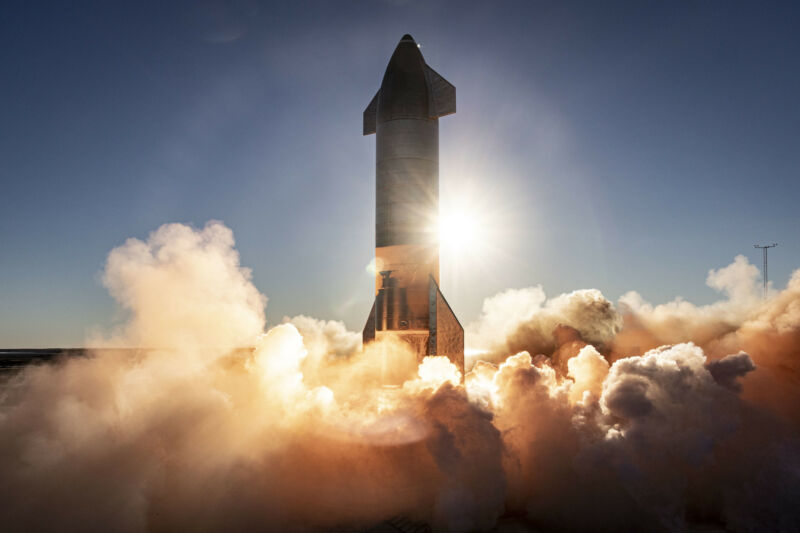
To build a fully reusable launch system for its interplanetary Starship vehicle, SpaceX has had to solve myriad technical challenges, such as slowing the massive spacecraft down as it reenters Earth's atmosphere at near-orbital velocities.
But perhaps the biggest challenge—as always, with rockets—is fairly mundane: its mass. The goal with a rocket is to build the lightest possible vehicle with the greatest amount of performance. In theory, it sounds simple. But in practice, containing volatile liquids at high pressures is anything but simple. And with a fully reusable launch system, SpaceX has the added challenge of building vehicles that can withstand the rigor of launch, perform in a vacuum, and then return screaming through the atmosphere to land back at sea-level pressures.
The need to build light, strong, and adaptable vehicles sometimes leads to interesting design choices. At the end of 2020, SpaceX founder Elon Musk took to his favorite social network, Twitter, to share one of them with his followers. "We’re going to try to catch the Super Heavy Booster with the launch tower arm, using the grid fins to take the load," he said. The Super Heavy rocket, likely to have about 28 Raptor engines, will launch Starship into Earth orbit.
At first blush, this sounds insane. How do you catch a falling rocket with the launch tower? And why would you risk the valuable launch infrastructure by attempting to land a massive rocket right on top of it?
One answer is mass. The company's Falcon 9 rocket first stage uses four large landing legs made from carbon fiber and aluminum to stabilize the vehicle as it touches down. Although made of these light materials, the combined mass of the four landing legs is still about 2 metric tons. The legs for the much larger Super Heavy booster would likely need to be several times larger, perhaps on the order of 5 to 10 metric tons.
Who needs legs?
It also would be more efficient. If SpaceX can design a launch tower arm, or pair of arms, to grab the Super Heavy booster, it might be moved rather quickly back onto the launch mount. Such a rocket might then—and this would require years of refinement and experimentation—be rapidly inspected, refueled, and launched again. Perhaps even within an hour, Musk said.
It is unclear whether this is even possible. But in theory, a Super Heavy booster could descend under the power of a subset of its 28 engines, come very nearly to a hover, and arms from the launch tower could extend to grab the booster. This does sound like a rather crazy maneuver, but a few years ago so did dispatching an autonomous drone ship into the Atlantic Ocean to catch falling rockets.
Whether this all works out remains to be seen. SpaceX has tried many things in the past in regard to rockets only to discard these ideas. This is one of the keys to success for Musk and his leadership style. He asks his employees to do nearly impossible things—such as building a fully reusable orbital launch system. And then he gives them the freedom to experiment and, sometimes, to fail.
This idea sounds like it just might be crazy enough to work.
"try" - Google News
January 04, 2021 at 08:45PM
https://ift.tt/3pO4ZEc
SpaceX may try to catch a falling rocket with a launch tower - Ars Technica
"try" - Google News
https://ift.tt/3b52l6K
Shoes Man Tutorial
Pos News Update
Meme Update
Korean Entertainment News
Japan News Update
Bagikan Berita Ini














0 Response to "SpaceX may try to catch a falling rocket with a launch tower - Ars Technica"
Post a Comment